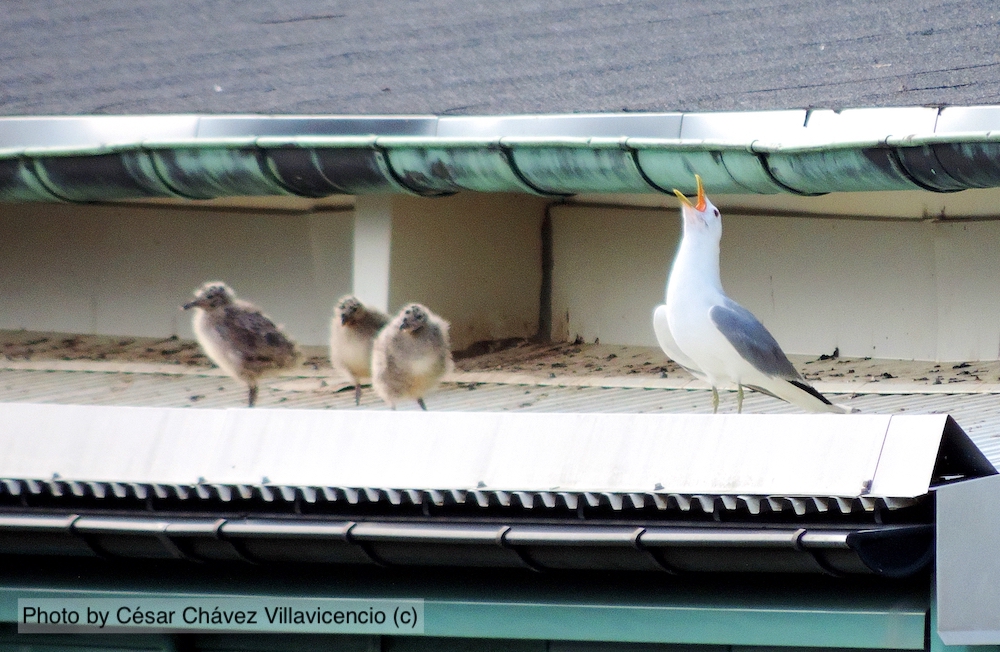Häckning av fiskmås Larus canus i ett bostadsområde i Malmö
DOI:
https://doi.org/10.34080/os.v29.19924Nyckelord:
konflikt mellan människa och djur, stadslevande fåglar, häckning i stadsmiljöAbstract
Fiskmås Larus canus häckar vanligtvis vid kusten men återfinns i en mängd olika biotoper med tillgång till vatten. Det är känt sedan länge att fiskmåsen även häckar i stadsmiljö, men det saknas dokumentation på hur utbrett det är och hur det har påverkat fiskmåsens beteende. Vi har observerat häckade fiskmåsar i Malmö och intervjuat ordföranden för en bostadsrättsförening om de boendes erfarenheter och observationer. Många har en negativ uppfattning om fiskmåsarna då de anser att fiskmåsarna smutsar ner taken, luktar illa, för oväsen och uppvisar aggressivt beteende under häckningsperioden. Med tanke på fiskmåsars och människors motstridiga intressen krävs bättre dokumentation av häckningspopulationen i stadsmiljö samt dokumentation av måsarnas beteende och interaktion med människor.
Nedladdningar
Referenser
Belant JL. 1997. Gulls in urban environments: landscape-level management to reduce conflict. Landscape and Urban Planning 38: 245–258. https://doi.org/10.1016/S0169-2046(97)00037-6 DOI: https://doi.org/10.1016/S0169-2046(97)00037-6
Chávez-Villavicencio C. 2014. Approach to breeding site selection of Kelp Gull (Larus dominicanus Lichtenstein 1823) in an urban area from Coquimbo region (Chile) and a new nesting substrate. The Biologist (Lima) 12: 33–44. (In Spanish with English summary.)
Burger J, Gochfeld M, Kirwan GM, Christie DA & Garcia EFJ. 1996. Mew Gull (Larus canus). In: del Hoyo J et al. (eds). Handbook of the Birds of the World, Vol. 3: Hoatzin to Auks. Lynx Edicions, Barcelona.
Green M, Haas F & Lindström Å. 2019. Monitoring population changes of birds in Sweden. Annual report for 2018. Department of Biology, Lund University. 92 pp. (In Swedish with English summary.)
Jones M. 1985. Distribution and activity of Common Gulls and Black-headed Gulls on grassland in Manchester. Bird Study 32: 104–112. https://doi.org/10.1080/00063658509476864 DOI: https://doi.org/10.1080/00063658509476864
Kroc E. 2018. Reproductive ecology of urban-nesting Glaucous-Winged Gulls Larus glaucescens Vancouver, BC, Canada. Marine Ornithology 46: 155–164.
Mitchell PI, Newton SF, Ratcliffe N & Dunn TE. 2004. Seabird Populations of Britain and Ireland: Results of the Seabird 2000 Census (1998–2002). T & AD Poyser, London.
Raven SJ & Coulson JC. 1997. The distribution and abundance of Larus gulls nesting on buildings in Britain and Ireland. Bird Study 44: 13–34. https://doi.org/10.1080/00063659709461035 DOI: https://doi.org/10.1080/00063659709461035
Rock P. 2005. Urban gulls: problems and solutions. British Birds 98: 338–355.
Skórka P, Martyka R, Wójcik JD, Babiarz T & Skórka J. 2006. Habitat and nest site selection in the Common Gull Larus canus in southern Poland: significance of man-made habitats for conservation of an endangered species. Acta Ornithologica 41: 137–144. https://doi.org/10.3161/000164506780143889 DOI: https://doi.org/10.3161/068.041.0111
Snow DW & Perrins CM. 1998. The Birds of the Western Palearctic. Concise Edition. Vol. 1 Non-Passerines. Oxford University Press, Oxford.
Svensson S, Svensson M & Tjernberg M. 1999. Swedish Bird Atlas. Vår Fågelvärld, suppl. 31. Sveriges Ornitologiska Förening, Stockholm. (In Swedish.)

Downloads
Publicerad
Referera så här
Nummer
Sektion
Licens
Copyright (c) 2019 César Lautaro Chávez-Villavicencio

Det här verket är licensierat under en Creative Commons Erkännande 4.0 Internationell-licens.
Författaren/författarna innehar copyright för varje enskilt bidrag, men samtliga bidrag är publicerade under en Creative Commons-licens, så att vem som helst kan dela och återanvända bidraget förutsatt att copyright-innehavaren erkänns.







